Introduction
Preparation of cargo holds for the next intended carriage is a critical element of bulk carrier operations, requiring careful planning and competent execution. A lack of proper preparation not only leads to claims related to cargo quality, such as contamination, water ingress or shortage claims, but also contractual claims relating to failed or delayed surveys, off-hire claims and charter party disputes.
Preparation starts well before the cargo first lands on the tank-top and a number of factors must be considered to ensure that the preparation is targeted, effective and correct. Sweeping out the hold and washing it down may be acceptable for one type of cargo, but may not be effective for another. Understanding exactly what is required is essential. It is important everyone involved in the 'cargo chain' from the chartering and operations team ashore, to the Master, Chief Officer and crew on-board understand the processes involved.
Fixing the cargo voyage
Key Point: Chartering Teams and other shore members of the 'cargo chain' must understand the ships they manage and operate.
In order to ensure that the voyage proceeds smoothly, it is very important to pay careful attention to the cargo during the fixing period. Otherwise the hoped for profits can turn into serious losses. Chartering Teams need to have a clear understanding of the proposed cargo lift and vessel to put the business on to the right track from the outset, in particular they must be:
- able to accurately assign a specific cargo to a ship, which the ship can safely carry;
- aware of the type and size of the ship, the hold construction and the normal standard of hold conditions, for example, understanding how difficult high-up areas of holds are to be accessed and cleaned on even relatively small bulk carriers is critical;
- familiar with a ship's cargo carrying capabilities and ensure that potential cargoes are properly understood prior to concluding any fixtures. This would include the properties, cleanliness and carriage requirements to safely and efficiently match a cargo to a ship;
- clear terms should be incorporated into the fixture to ensure there is certainty as to the cargo to be laden, cleanliness requirements, post carriage cleaning and compliance with regulations such as MARPOL - risk and responsibility for these matters need to be clearly set out in the fixture.
- Should any uncertainty exist in fixing a potential cargo, chartering teams must communicate with operations and technical departments, to seek clarification and to make informed decisions.
Skuld Case Study:
Skuld Charterer Member took on a vessel without considering the differential in hold dimensions and hatch size, which meant that the discharge of the holds would need both grabs and bulldozers. A significantly longer discharge took place than planned, but Charterers failed to off hire the vessel as both hold dimensions and hatch size dimensions were clearly stated in the fixture correspondence.
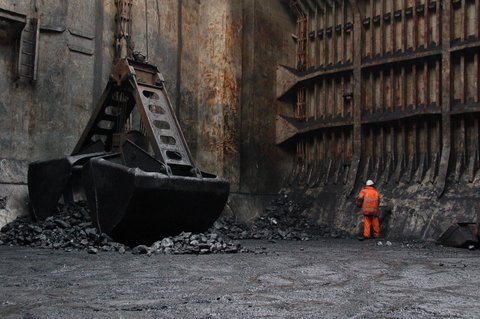
Chartering teams and shore members of the 'cargo chain' must understand the ships they manage and the cleanliness requirements for potential new cargoes
Cargo declaration
Key Point: Cargo must be correctly nominated through the IMSBC Code (International Maritime Solid Bulk Cargoes Code 2012 edition) and comply with SOLAS.
The issue of proper cargo declaration is very serious, as mis-declared cargoes can have catastrophic consequences. This has been brought in to sharp focus due to the many liquefaction related casualties in the last few years, but the issues go further and affect other cargoes, too. For instance it is important to know whether a cargo of coal is prone to self heating and / or gives off lots of gasses.
All persons involved in the voyage, be it Chartering Teams, Operations Teams, and Ship's Crew need to be fully aware of what each cargo involves in terms of regulatory compliance and actual safety. This is to ensure that the right advance information can be demanded from Shippers, and the cargo can be properly assessed when tendered for loading. Important to know is that the IMSBC, IMDG and SOLAS are:
- international legal standards, that must be adhered to;
- that it is important to ensure that the provisions of sections 1.3 and 4.2 of the IMSBC are legally met; these relate to the shippers obligations of identifying and issuing relevant information on the cargo to the Master and/or his representative. This is important whether it is a nominated and listed cargo in appendix 1 or not;
- obtaining accurate information about the cargo is crucial. It is important to ensure all possible guides to best practices are consulted and in case of doubt loading should not take place or be halted.
Skuld Case Study:
Skuld Owner Members were presented with a cargo of mineral ore in bulk that had been declared by the Shippers to be a Category "C" cargo under the IMSBC, i.e.: a cargo that was neither prone to liquefaction (Category "A") nor presented a hazard (Category "B"). The Master spotted that the cargo was very wet prior to loading and called a halt to operations. Testing revealed that the cargo was in the nature of Category "A" and had been mis-declared. The Master's keen awareness of the issue helped to keep his crew and vessel safe.
Instructions to the vessel
Key Point: Voyage instructions must be communicated to Masters in a clear, concise and unambiguous manner.
The "operating" Charterer may not be a direct contractual relation to the Owner, but clear voyage instructions need to be supplied to the vessel: and called for if not provided in due time. Once available, the Operations Team should review these with the Chartering Team to confirm that the instructions are in conformity with the Charterparty and contain enough practical information to allow the vessel to be prepared in advance of cargo operations. In particular it is necessary to:
- ensure carriage, cleaning and preparation instructions are issued in a timely manner to assist the Master and his crew in their on-board preparations;
- verify that they include cargo fixture details, timings, type, cleanliness requirements and carriage instructions. It is always prudent to request for a confirmation of receipt and understanding of all provided instructions;
- have Masters and C/O's discuss the voyage instructions, they must seek immediate clarification if any parts of the instructions are unclear;
- monitor that cleanliness and preparation requirements are planned properly and that a formalised plan is created. This should detail the method of preparation, the cleanliness standard and the equipment, resources and time required to complete preparations safely and effectively. Once finalised, it should be communicated back to the charterers.
Standards for hold cleanliness
Key Point: pre and post voyage cleanliness standards and any other preparations required for a potential cargo must be fully understood.
The standards can vary greatly between cargoes, and in particular if there is a switch between one cargo type and another, great care must be taken to account for cargo residues and chemical reactions between different types of cargoes. Furthermore new MARPOL regulations have to be closely observed with respect to the disposal for cargo residues from previous voyages.
Ensuring that Crew and Operations Teams are fully aware of the facts, the cargo requirements and the regulatory environment, will assist greatly in planning and executing effective preparations and consequently in reducing potential claims. In particular the following should be attended to:
- in preparation for the next intended cargo, full use of the discharge facilities of the current port/ terminal should be made. Removal of as much cargo remnants out of the holds reduces disposal and clean-up costs and saves time before the next load port;
- the vessel should have on board the necessary cleaning materials, especially if these can not be sourced locally: advance planning is required including advance discussions with local Agents;
- instructions for washing-down procedures usually follow an approved industry standard and must be strictly adhered to;
- should time constraints potentially limit the completion of the full washing-down procedure, charterers should be advised accordingly;
- MARPOL regulations and local port regulations must be complied with strictly.
Skuld Case Study:
A vessel arrived at loadport to take on the next cargo, but had not been able to carry out the planned cleaning during the sea voyage due to encountering heavy weather on route. Furthermore, on inspection it was revealed that more cleaning had to be done than was planned, but the ship did not have sufficient stores on board plus the required materials were not immediately available locally. A Defence dispute ensued between the Owners and Charterers as to who would be responsible for the delay and the cost of supplying further materials to the vessel. This dispute could have been avoided had more advance planning been carried out.
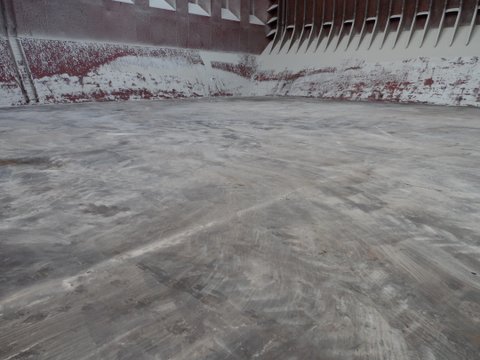
Remove as much cargo residue as possible at the discharge port, in accordance with MARPOL and local regulations
Specific instructions and requirements
Key Points: it is important to always be fully aware of the requirements of each cargo and where it is to be laden. Ignorance or assumptions can lead to delays, losses and disputes.
Should specific cleaning instructions be given, they will usually fall under one of these five usual standards for the bulk cargo trade:
| Stringent clean |
|
| Grain clean |
|
| Normal clean |
|
| Shovel clean |
|
| Load on top |
|
Skuld Case Study:
The Vessel was fixed to carry grain from Australia, and she had undertaken what was described as “normal” grain standard cleaning prior to arrival at the loadport. On arrival small rust patches were noted, the vessel failed her inspection and a very expensive re-cleaning had to be undertaken. A Defence dispute between Owners and Charterers followed, but could have been prevented if the responsible party had been more aware of the very stringent requirements imposed by the Inspectors in Australia.
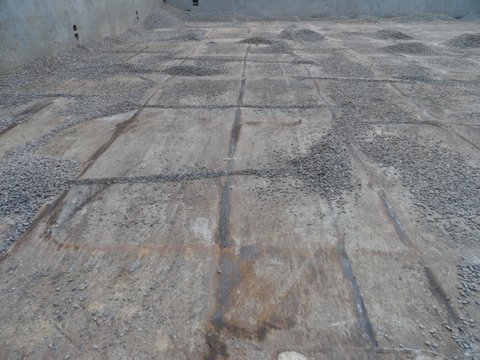
Even 'load on top' cargoes require basic shovel cleaning to carry out proper maintenance inspections
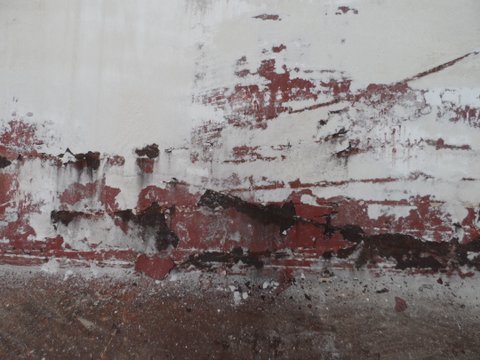
Holds should be free of loose paint flakes and rust scale
Loss Prevention - Basic standards
Key Point: even if no specific cleaning instructions are received, it is good practice to always ensure holds are cleaned to a minimum standard.
Prudent loss prevention goes hand in hand with good vessel operations. If the vessel is run to a high standard as a matter of normal operations then this will reduce the risk of delays, losses, claims and disputes. That yields a significant dividend to the Ship-Owner in the long run, voyages are more profitable and the ships will attract a better rate due to their high standards. Furthermore, focusing on hold standards:
- allows for effective inspections and maintenance to be undertaken;
- even when loading the same type of cargo, where no clean up requirements are stated, inspections cannot be carried out unless a basic clean-up is carried-out;
- but a failure to carry out a sweep-up of cargo debris and loose rust scale could hide fresh damage that may ultimately lead to a claim. Cleaning holds to a minimum standard involves a sweep up and thorough saltwater wash, followed by a freshwater wash and then a dry out;
- which mean cleaning should always be finished with a fresh water wash-down. No traces of chemicals or chlorides should be detectable and with certain cargoes, their presence will be tested;
- and after washing-down, holds must be dried properly and ventilated. Additional preparations should be applied as required, for example lime washing.
Loss Prevention - Safety
Key Point: precautions must be taken when dealing with chemicals during the cleaning process.
When conducting hold cleaning it is important to remember that the primary focus of ship operations must be safety. The safety of the crew is paramount. Following on from that, the safety of the vessel, cargo and environment need to be considered. Attention needs to be paid to:
- if chemicals are to be used as part of the washing-down procedure, agreement on compatibility with the next intended cargo must be sought from the shippers/ charterers;
- the proposed chemicals must be understood and accurate data must be obtained on their use and safe handling;
- when a chemical product and/or other specialist equipment is used, proper risk assessments, permits to work and standard operating procedures must be followed. Tool-box talks should be carried out with all crew members involved and full/correct PPE must be issued and worn at all times throughout the task;
- cargo residues, wash water and wash water containing chemicals which are Harmful to the Marine Environment (HME) must be identified as such and disposed of in the correct manner. From 1 January 2013, new requirements under MARPOL annex V have come into force, which specifically apply to the disposal of cargo residues and wash water in to the marine environment. All persons involved in the cargo chain must familiarise themselves with these requirements. They basically state that:
Note: due to a reported lack of adequate reception facilities at present, MEPC Circular 8104 allows the discharge of HME cargo residues contained in hold wash water until 31 December 2015 outside Special Areas providing that:
|
Skuld Case Study:
In a string of Charterers, Skuld Charterer Member had the contractual responsibility to prepare the vessel for the last cargo (Sulphur). The Owners alleged that multi-million dollar damage was caused to the holds of the vessel due to alleged insufficient lime washing. Skuld was able to negotiate a drop out for Skuld's Member and the case continued directly between Owners and sub-Charterers. This was due to Skuld being able to obtain full security against sub-Charterers early on. The case highlights the need to ensure that (a) when chemically reactive cargoes are laden that holds are fully prepared for the job and that (b) contractual counterparties are able to meet significant liabilities when they arise.
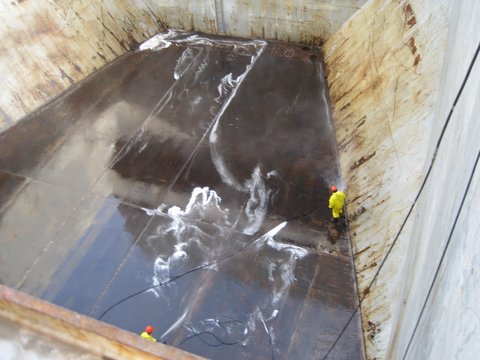
All traces of cleaning chemicals must be thoroughly removed
Loss Prevention - Maintenance
Key Point: it is essential to maintain the cargo carrying areas and equipment to a high standard.
In order to ensure that vessel operations are smooth, problem free and ultimately rewarding, it is essential to maintain the necessary standards of maintenance. This includes paying attention to:
- cargo holds, hatch covers, bilge systems, hydraulic & electrical systems, fixed firefighting systems and any other associated equipment are all elements that must be inspected and maintained appropriately;
- planned maintenance systems (PMS) should exist for all relevant structures / equipment which should also include inspection and test regimes;
- combining this with appropriate systems for reporting and correcting defects must form an overall effective maintenance strategy through the ship's ISM system;
- regular inspections should be carried out after the completion of every discharge and cleaning cycle and should include:
|
- robust maintenance regimes are vital in reducing cargo damage claims, third part discharge equipment claims as well as personal injury claims. Maintaining a safe and damage free environment for the cargo, the stevedores, the stevedores cargo handling equipment and the ship's personnel requires effective maintenance;
- photographs and documentation should be used to keep accurate logs of the maintenance done and the general condition of the cargo holds.
Common cause of cargo damage
Key Point: water ingress claims are still a major source of cargo related claims on bulk carriers.
The Association sees this cause as one of the most common and recurring features of cargo claims, especially for the carriage of sensitive cargoes like grains, soyabeans and rice. Often it turns out that better maintenance and standards could have prevented very expensive claims. It is important to watch out for:
- water ingress usually results from 3 sources:
> Leaking hatch covers
> Back-flow through bilge systems
> Ballast tanks, including impact damage on structures, leaking manhole lids and in-adequate monitoring.
- effective measures should be taken to monitor and test these particular areas of concern and defects must be identified and rectified as soon as possible.
- additional water sources:
> moisture from loading cargo that is wet or comes with a high moisture content
> condensation or "sweating" that can come from a lack of ventilation or incorrect ventilation
Skuld Case Study:
A vessel carried a cargo of grain from North America to the Mediterranean, and on discharge very extensive water damage was found to have occurred in the top layers spread over a number of cargo holds. While the vessel did meet some poor weather on route, it was not exceptional. Instead testing revealed that the hatches were not water tight, and this meant it was not possible to effectively limit liability on the claim which exceeded a million dollars. The claim was entirely preventable.
Practical advice: Doing the homework
Key Point: a thorough inspection must be carried out on completion of the preparation and before tendering a notice of readiness to load.
It is much better to prevent a hold inspection failure than to have to deal with the cost and consequence of the vessel being rejected for loading. Some advance preparation can make all the difference:
- the C/O should carry out an inspection of the cargo carrying spaces and equipment. He must view the inspection through the eyes of any potential pre-shipment surveyor/inspector and apply rigorous checks accordingly;
- during any pre-shipment survey, the Master or C/O must accompany the surveyor/inspector at all times and crew members should be standing-by ready to rectify any deficiencies noted;
- regular checks should be made for the unwanted presence of insect infestation, larvae and eggs, animals and animal droppings, sewage or odours. It is important to check all areas of the holds;
- accurate drawings, plans and descriptions of the cargo holds detailing basic construction information and clearly indicating the location of any obstructions/protrusions should be kept. These can be given to stevedores when cargo operations are taking place as this will serve as a useful tool in reducing mechanical damage and other possible claims;
- effective cargo watches should be conducted at all times during loading and discharging. Damage, contamination and other serious deficiencies should be formally reported and documented through relevant reporting mechanisms in the ISM system. Photographs are always invaluable additions to written statements.
Skuld Case Study:
A Chief Officer went in to the cargo holds to check on the state of cleaning following discharge of a bulk cargo. A significant part of the cargo was caked and the Chief Officer did not take proper care, instead seeking to loosen the caking manually with an iron bar. Suddenly the entire cargo mound collapsed on to him resulting in very significant injuries which ended his sea going career. An investigation revealed a poor standard of risk perception on the vessel and insufficient discipline leading to company mandated safety procedures being ignored.
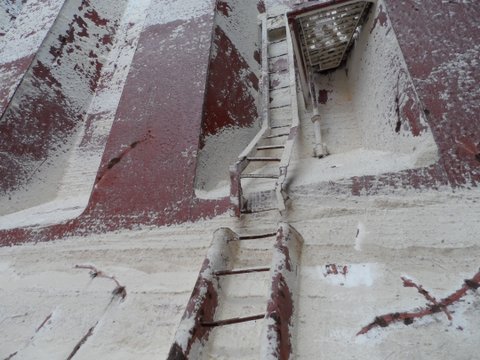
Inspect holds thoroughly and repair damages immediately
The law
Key Point: Owners and Charterers must know their respective hold cleanliness obligations under the charterparty.
The Bunga Saga Lima [2005] 2 Lloyd's Rep. 1
Facts:
- The Bunga Saga Lima was time chartered pursuant to a NYPE charterparty
- According to NYPE '93 form: "The vessel on her delivery shall be ready to receive cargo with clean-swept holds and tight, staunch, strong and in every way fitted for ordinary cargo service, having water ballast and with sufficient power to operate all cargo-handling gear simultaneously."
- The holds were found to be dirty with coal residues on delivery
- The time charterers' first cargo to be loaded was iron ore, and the second cargo was rapeseed in bulk
- The vessel needed to be cleaned only for the second loading of rapeseed
Held:
- Although the vessel did not need to be cleaned to load iron ore, by not insisting on clean holds on delivery, the charterers had lost their rights to claim for the loss of time and expense incurred to clean the holds at the second load port
- Under the NYPE and Fixture Note, the only entitlement to place the vessel off-hire in the event of unclean holds was upon delivery or arrival at the first load port, and not thereafter
Lessons Learnt:
- It is recommended that when a vessel is time chartered pursuant to terms similar to the Fixture Note, clause 13 in the Bunga Saga Lima, the time charterers should always require the vessel to be "grain clean" upon delivery/ arrival at the first load port, even if the actual cargo to be loaded at the first load port does not require such cleaning
- Alternatively the time charterers should expressly reserve their rights to the owners and most importantly obtain the owners' agreement hereto.
For more information on this case, please see: The Bunga Saga Limacase - "Grain clean" on arrival.
The Bela Krajina [1975] 1 Lloyd's Rep. 139
Facts:
- The Bela Krajina first carried a cargo of phosphate and then manganese
- On each occasion, the crew had noticed loose rust and cleaned it off, but when the vessel arrived at the next port to load grain, it was rejected
- The crew spent a week cleaning the holds
-
The charterers placed the vessel off-hire during this cleaning period
Held:
- It was held that 'customary assistance' under the charterparty did not include cleaning operations requiring the use of sophisticated tools like chipping hammers, high pressure water jets and sandblasting equipment
Lessons Learnt:
- It is important to know what cleanliness standards are required for a potential cargo and preparations for this must be made well in advance
The Association is grateful to:
Andy Morris, Director and Marine Surveyor, of BMT Surveys (London) Ltd., for the technical input and the photographic illustrations in this article.
This article was prepared with contributions from :
Christian Ott
Vice President, Head of Claims
Skuld Singapore
Nikita Lulla
Claims Assistant
Skuld Hong Kong
Anatolii Bilyk
Senior Claims Executive
Skuld Hamburg
Dorothee Schaar
Vice President, Head of Claims
Skuld Hamburg
In case Members have further queries, they are asked to contact the Association.